By
Published
https://www.sfmta.com/
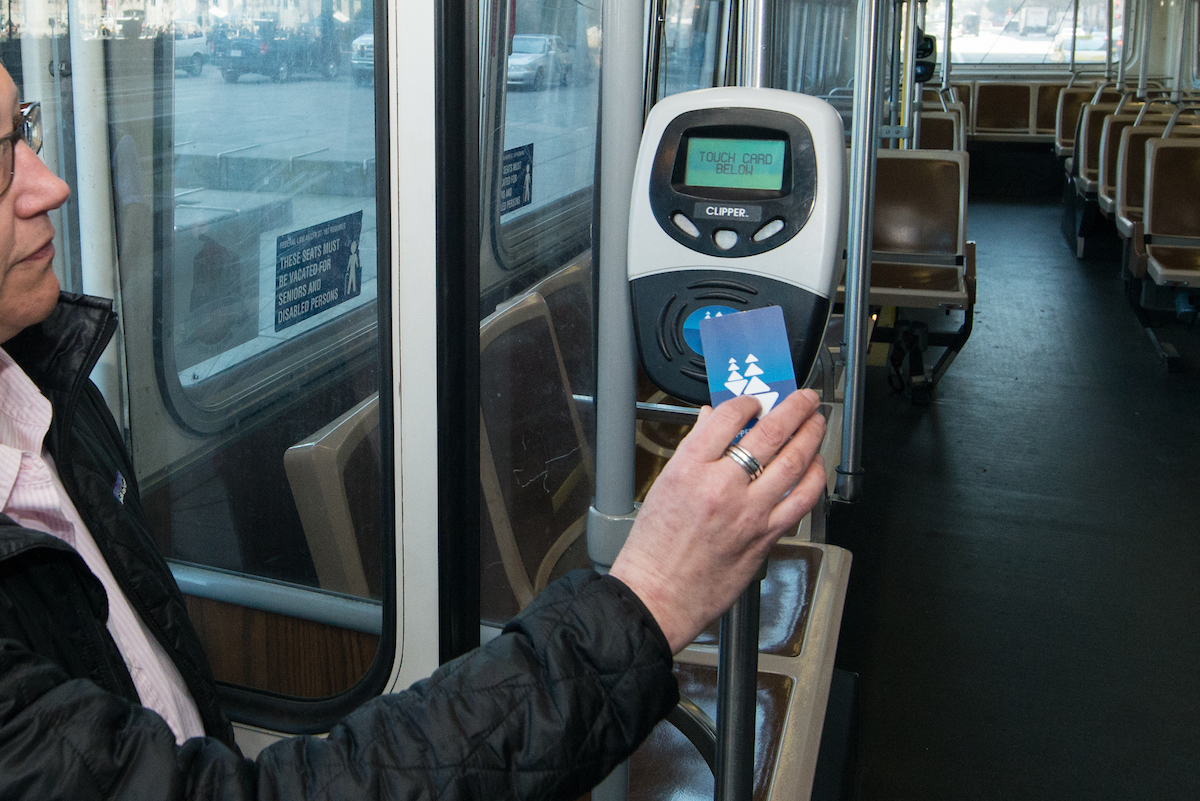 Tapping a Clipper card is one of the many ways to pay to ride Muni.
Tapping a Clipper card is one of the many ways to pay to ride Muni.
Maybe this has happened to you: You board Muni and tap your Clipper card or pay your cash fare, but lots of other people get on without doing the same. We understand how frustrating it is to see people appear to cheat the system and ride for free. However, most people who don’t tap the Clipper card reader or pay at the fare box aren’t doing anything wrong.
At the same time, fare evasion has increased over the last few years. We take this issue seriously and are doing something about it. We plan to hire more fare inspectors once our upcoming budget goes into effect.
There are many ways to pay Muni fares, including with cash, Clipper and the Muni Mobile app. Discount fares and passes are available for certain riders.
Some passengers are allowed to ride Muni for free. Young people 18 and under ride for free and don’t need any kind of pass or special ticket. Seniors with lower incomes, people with disabilities and people experiencing homelessness can apply for passes to ride for free. You can learn about all the ways to pay for Muni and our free or discounted pass programs at our Fares webpage (SFMTA.com/Fares).
It’s important to know that it may look like someone hasn’t paid their fare when, in fact, they have. Many of our programs allow riders to pay before boarding. For example:
With Muni Mobile, you activate your ticket in the app and don’t need to tap or show the operator anything.
If you buy single or multi-day visitor passports, you only need to tap if you load them onto a Clipper card.
If you transfer from one route or line to another after paying cash, you can board without showing the operator your paper ticket.
Tickets to events at the Chase Center include unlimited rides on Muni, except for the cable cars. No need to tap or show anything.
Just remember to keep proof of payment with you when you pay your fare. That could be your ticket, app, Clipper card or pass.
Most Muni riders pay their fares. But too many others do not, and fare evasion is on the rise. Before the Covid-19 pandemic, around 12% of people on Muni who should have paid a fare did not. We believe that number has grown to just over 20% today and are working to confirm that estimate.
Our ridership continues to increase and is up to 76% of pre-pandemic levels, as of March 2024. But we aren’t reaping the full financial benefit of that recovery because of fare evasion. Muni is a public service and a public good. The system is critical to our city’s climate goals and its economic vitality. It also promotes social and racial equity. It isn’t right to let some people choose not to pay their fair share.
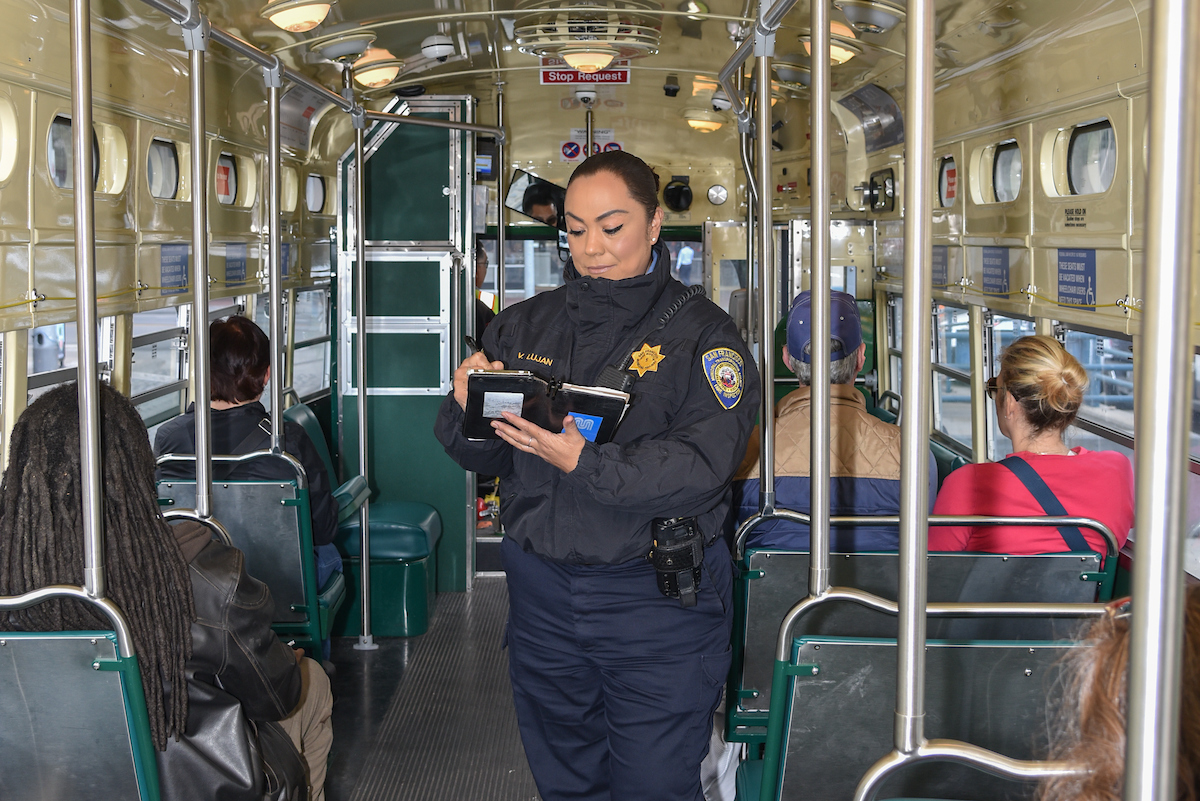 Transit Fare Inspector Veronica Lujan checks fare compliance on the F Market line.
Transit Fare Inspector Veronica Lujan checks fare compliance on the F Market line.
To cut down on fare evasion, we plan to hire three dozen additional transit fare inspectors. We have allocated money in our upcoming two-year budget to pay for these positions.
Our fare inspectors work on routes and lines throughout the entire Muni system in a way that is fair and equitable. The inspectors are there to encourage compliance and increase fare revenue, not punish people. The more riders see our fare inspectors on Muni, the more likely it is that people will pay their fares. We are not trying to make money by writing tickets.
Our inspectors also help riders in other ways:
They have information about our fares, including our discount pass programs.
They educate anyone who hasn’t paid, instead of just citing them.
They have information about supportive services for riders who may be experiencing homelessness.
Their presence encourages safety and security on Muni, even though they aren’t part of law enforcement.
Fare inspectors are there to support riders, and we are looking forward to offering more of that support.
We know that the different fare payment methods can be confusing, especially when some people have to tap a card reader and others do not. But there is good news. The Metropolitan Transportation Commission is working to update Clipper card technology. This will allow us to offer more fare options and passes on Clipper. Plus, people will be able to tap a credit card to pay fares. This should result in more people tagging card readers when they board and all riders feeling more confident that their fellow passengers are paying their fair share.
Muni depends on your support. Fares keep the system running. They help pay for programs that have made Muni faster, safer, more reliable and cleaner than it has been in decades. Put simply, fares help hundreds of thousands of people get around every day.
Every dollar invested in Muni goes a long way. When we all do our part by paying the appropriate fare to ride, Muni can serve everyone better.
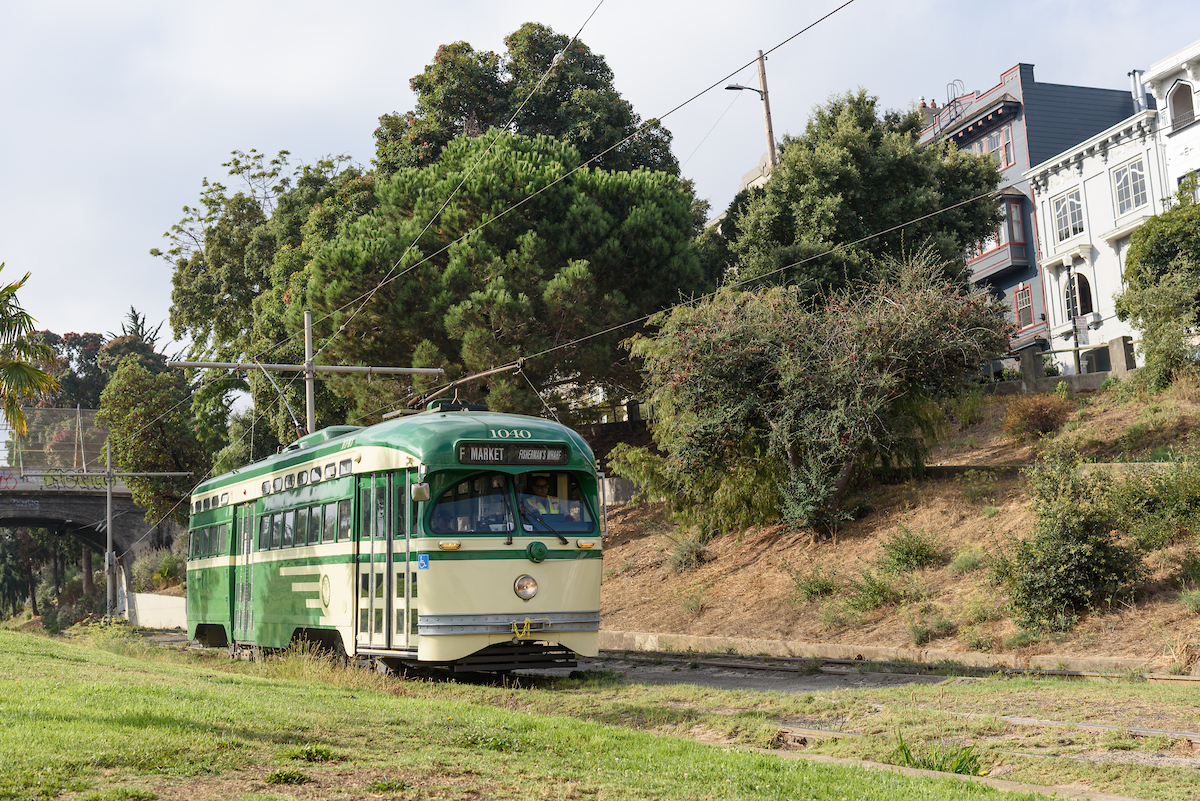
During Muni Heritage Weekend, riders took a green trip through Dolores Park in one of our historic streetcars.
Five years ago, the city declared a climate state of emergency. We see the climate crisis in our rising seas. We feel it with worsening storms, raging wildfires and a warming planet.
The good news: we can all make choices to confront it. San Francisco has chosen to be a transit-first city, to prioritize safety for people walking and rolling, and to lead the way on clean energy. That’s why San Francisco was again ranked number one in the nation on the latest clean energy survey. You can view the survey results on the American Council for an Energy-Efficient Economy’s City Clean Energy Scorecard webpage.
There is no way to meet our city’s climate goals without green options to get around. And turning these goals into reality is up to all of us. Every time you use a green option to get around, you’re helping build a better future. That’s why we’re always working to make it easy and accessible for you to ride transit, walk and bike. And to meet our climate goals, we need to make low-carbon and no-carbon options the best way to travel.
Following Earth Month and the latest clean energy scorecard, we want to celebrate your impact. We’ll share what you make possible when you use green options to get around.
San Francisco is not immune to climate change, and we have a moral obligation to do our part to confront it. We need to adapt to be more resilient and turn our city’s Climate Action Plan into reality.
Every time you walk, bike, roll, or ride public transit, you get us closer to our goal of net zero emissions by 2040. By choosing sustainable travel, you help us slash our greenhouse gas emissions. That’s critical, because transportation is one of the biggest sources in San Francisco:
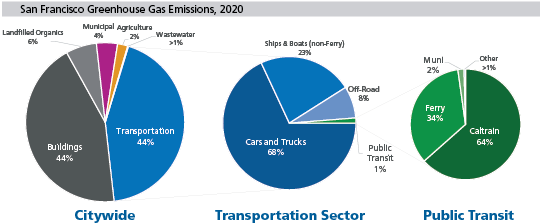
Accessible version of the San Francisco Greenhouse Gas Emissions infographic
Private cars and trucks emit 30% of our city’s total greenhouse gases
Muni emits less than 0.001%
And of course, biking and walking emit no greenhouse gases at all!
Muni is green and getting greener. Some consider electric vehicles a recent innovation -- but we have been using them for over a century!
Our light rail vehicles are electric and fossil-fuel free. Our iconic cable cars, trolleybuses and historic street cars are tried-and-true electric, zero-emission technology. All our electric vehicles run on 100% renewably generated hydro power from Hetch Hetchy. That's critical because electric vehicles are only as green as the power they run on.
For our bus fleet, the SFMTA was an early adopter of hybrid-electric technology all the way back in 2007. Our buses are very low emission. Still, we’re committed to achieving a 100% fossil-fuel free fleet. (We’re equally committed to a just transition for our workforce.)
Our taxis, a major part of our paratransit services are also very green! With over 90% low-emission vehicles, San Francisco has the cleanest taxi fleet of any major city in the nation. To further solidify itself as a national leader, the SFMTA is offering a new taxi rebate program. This way, we can help facilitate the taxi industry's transition to clean vehicles.
In 2019 we launched Green Zones. In this program, we run hybrid buses on batteries in environmentally impacted communities. This means no emissions for neighborhoods with poor air quality or a history of environmental injustice. You can learn more in our blog about the Green Zone program.
And today we’re running a pilot program to test battery-electric buses. This will show how they handle San Francisco’s hills and prepare us to use more electric buses in the future.
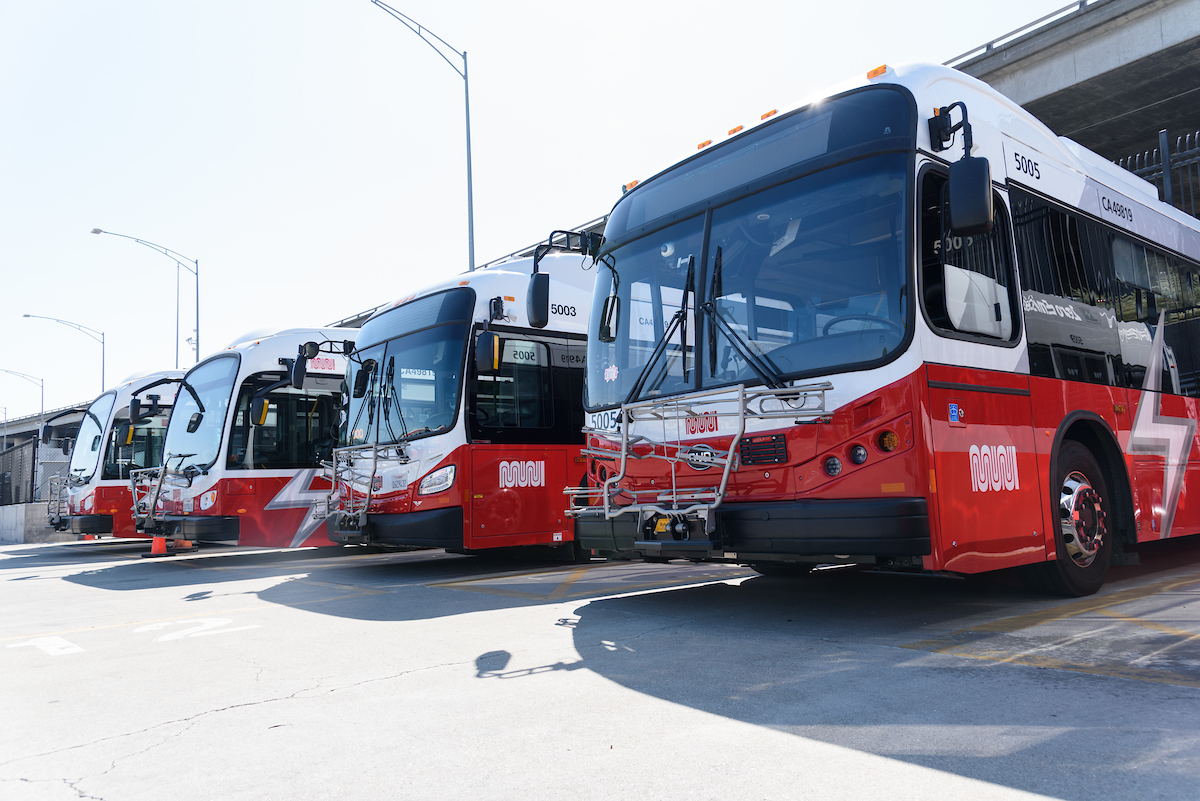 We have 10 battery-electric buses now in service for our pilot program.
We have 10 battery-electric buses now in service for our pilot program.
While we work towards a zero-emission Muni, the best way to reduce vehicle emissions in San Francisco is to ride transit, walk, bike or roll. Muni is safer, faster, cleaner, and more reliable than it’s been in decades. So, choosing transit has never been easier!
Every part of the SFMTA is working for a cleaner, greener city. Our Streets Division is working to make San Francisco one of the best cities in the world to walk and bike. Our sign and paint shops take climate action with every crosswalk and stop sign. Our facilities staff are preparing for our all-electric future and cutting emissions from our buildings. And everyone who cleans, operates, maintains and secures our buses and trains gives you a green option to get around.
On Earth Day, we kicked off a new climate action campaign to make sure Muni riders know: you take climate action every time you take Muni, walk, bike or roll. So, keep an eye out for some new signs on our shelters and buses, keep going green and together we can choose a more sustainable San Francisco.
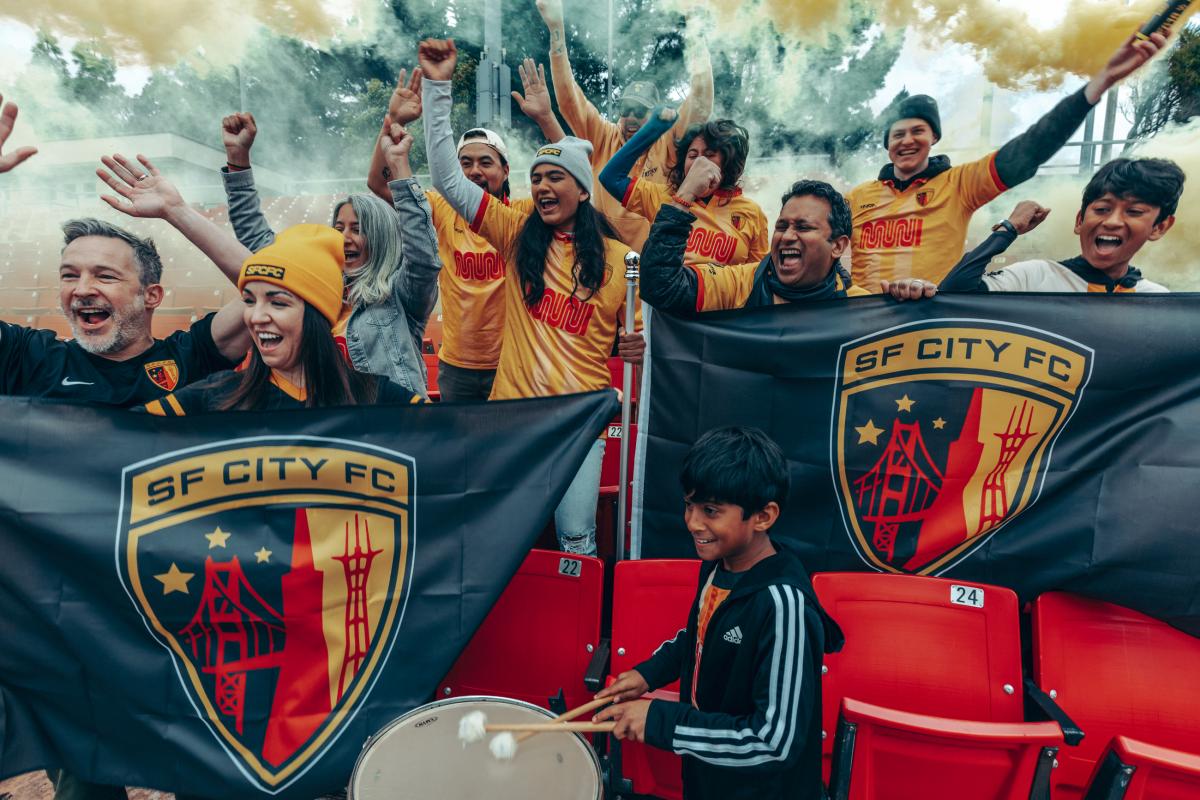 SFCFC fans rooting for the home team at Kezar Stadium.
SFCFC fans rooting for the home team at Kezar Stadium.
The start of the new San Francisco City Football Club (SFCFC) season is around the corner and there's more than just soccer to get excited about. This year, the country's first — and San Francisco's only — supporter-owned soccer club is teaming up with Muni.
We're excited to announce our in-kind partnership with SF City FC. Together, we're helping fans show their love for our local team and Muni. Our "Worm" logo is now featured prominently on SF City FC's jerseys for the next two seasons in the USL League 2 (United Soccer League). You can visit SF City FC's website for more information and to purchase tickets to games.
Seats are only $12, and you can take Muni for a stress-free ride to matches.
Take Muni: J, K, M, 29, 43 or 49
May 11th – Project 510 at 3 p.m.
May 18th – Academica at 3 p.m.
June 1st – Davis Legacy at 11:30 a.m.
June 9th – Almaden at 3 p.m.
Take Muni: N, 6, 7, 33, 37 or 43
July 3rd – Monterey Bay 2 at 7 p.m.
July 7th – Marin at 2 p.m. *Muni Day
July 14th – SF Glens at 2:30 p.m.
To find the route that works best for you, visit our Muni Routes & Stops webpage.
 An SF City FC player sports SFCFC’s new Muni-branded jersey at a bus stop.
An SF City FC player sports SFCFC’s new Muni-branded jersey at a bus stop.
SF City FC has built a reputation for its community-focused approach to soccer, and it's now easier than ever to be a part of the action. Since 2015, the club has been majority owned by its supporters. Fans can become co-owners for just $75 per year. This gives them a voice in the club's direction and a platform to contribute to its growth. It also helps them advance SFCFC's mission: making soccer accessible to all in San Francisco.
The start of the season is the perfect time to join this vibrant community. You can share in the collective pride and excitement that comes with being a part of something bigger. SF City FC's commitment to inclusivity and community makes it a unique organization in the world of soccer.
Whether you're heading to Kezar Stadium or Boxer Stadium, there are several ways to go green getting to the game. Both stadiums are conveniently accessible via multiple Muni lines, making it easier than ever to support the team and have a great time.
With Muni, fans can avoid the hassle of parking, reduce their carbon footprint and enjoy a smooth ride to the stadiums. So, grab your scarf, hop on Muni, and join us for an unforgettable season of soccer, camaraderie and San Francisco pride!
For more information and to snag seats for a game, visit SF City FC's website.
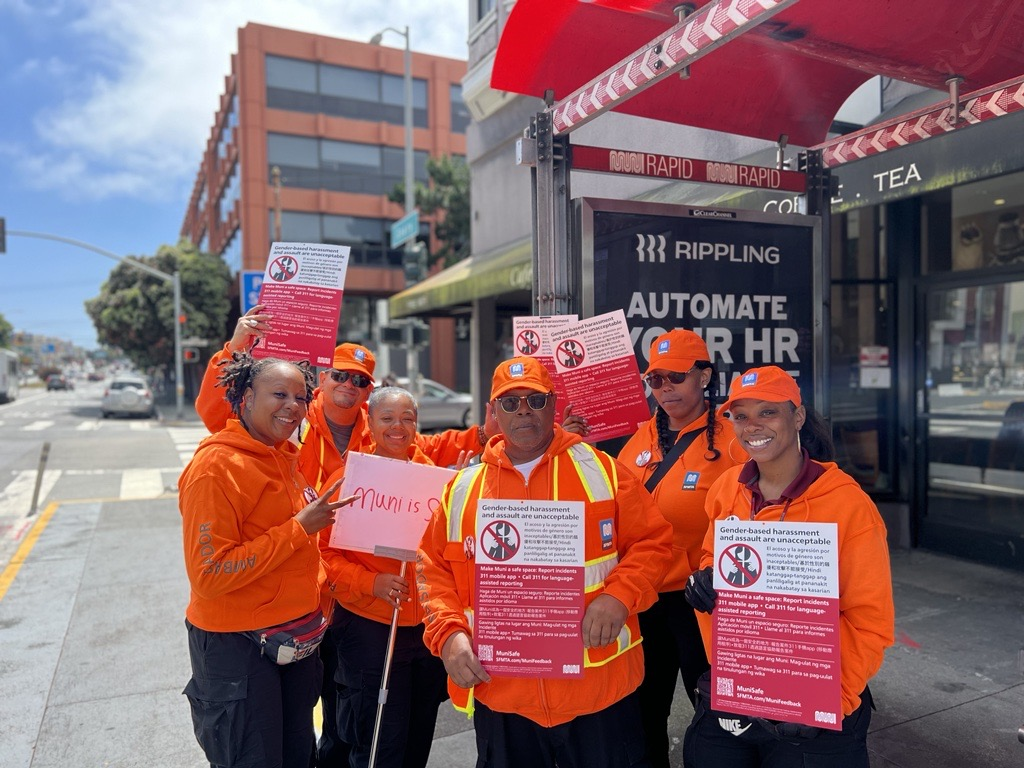 During our MuniSafe Day Out last June, SFMTA staff shared how to report harassment.
During our MuniSafe Day Out last June, SFMTA staff shared how to report harassment.
To make our system safer for everyone, we launched MuniSafe and the Safety Equity Initiative in 2022. These programs strengthen our work to prevent and address harassment across Muni vehicles, stops and stations. They also encourage people to report any issues.
We're excited to share what we’ve been doing to create safer conditions. We’ll cover our everyday efforts in de-escalation and enforcement. We’ll also share how you can take steps today to prevent and report harassment. Lastly, we’ll highlight what's next for MuniSafe.
There are now more staff across our system to provide support. We've hired more transit ambassadors to join our 3,150 employees who interact with customers. Our ambassadors can help stop or calm down conflicts before they get worse.
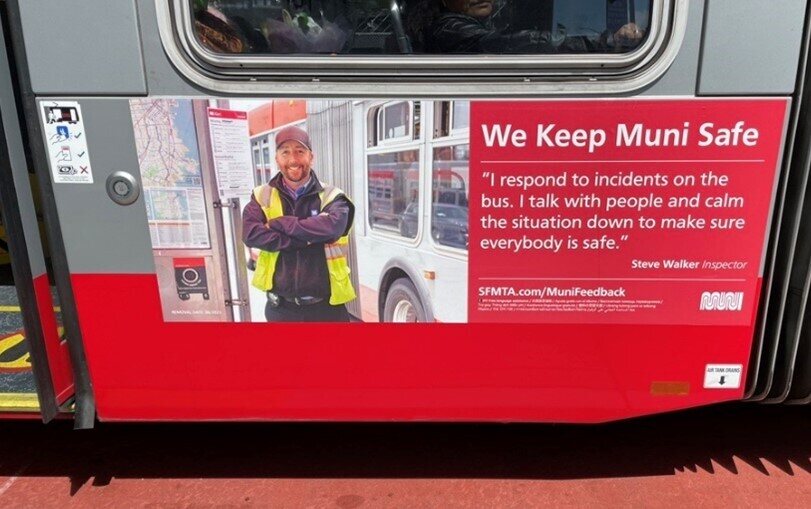
Transit ambassadors and other staff are here to help support you in difficult situations.
We’re also working to make your trips safer through enforcement. We continue to partner closely with the San Francisco Police Department and the District Attorney’s Office to make sure crimes on Muni are investigated and prosecuted.
Each Muni bus and train has at least 11 cameras that are always recording video and sound. This helps deter crime. It also helps us investigate any incidents that occur, especially when we get reports of serious issues. Our efforts are working: overall crime on Muni is down 48 percent from 2018.
You can access a range of resources to help prevent and report harassment on Muni. You’ll find them on our MuniSafe program webpage (SFMTA.com/MuniSafe).
We appreciate your efforts to report incidents. The more we know about safety concerns on Muni, the better we can address them. Your reports help us improve our safety responses and staffing. That’s why we’re working to raise awareness about MuniSafe across all our channels.
Our message is simple: We don’t tolerate harassment and you have multiple options to report it.
We’ve shared this across:
35,000 text messages
30,000 wallet cards and tear sheets
16,000 emails
We also put up multilingual signs at 1,500 Muni stops and 15 Muni Metro stations.
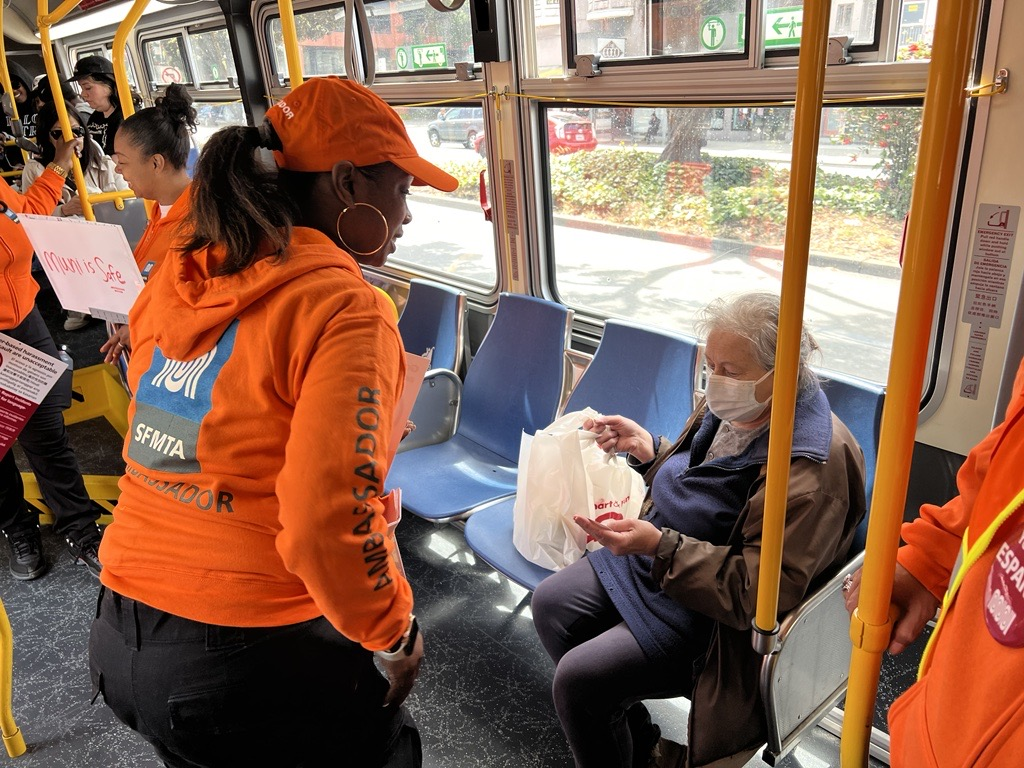 An SFMTA staffer teaches a rider how to report harassment and other issues.
An SFMTA staffer teaches a rider how to report harassment and other issues.
Our teams helped businesses promote the message with posters for their front windows. We also raised awareness on our busiest lines through “MuniSafe Day Out.” Last June, about 100 SFMTA staff put up posters and handed out cards about MuniSafe along Muni's seven busiest routes.
Over the past year, we've also been working hard to gather more accurate information about safety and security problems on Muni.
Our annual community and rider surveys now ask about experiences with harassment on Muni to give us a much clearer picture of safety concerns and how we can address them. Last year, we partnered with UCLA’s Institute of Transportation Studies for an in-depth survey about harassment experiences, and we’re moving forward with data-driven solutions.
A new state law requires the ten largest transit agencies in California to collect voluntary survey data about harassment. The goal: identify root causes to improve safety. Our work has put us ahead of the game. This year we’ll conduct another in-depth survey to measure our progress, learn from other agencies across the state and continue to shape our work to keep everyone safe on Muni.
Using this data and other learnings, we’re now drafting a Safety Equity Action Plan. We’re considering various steps to continue making Muni safer. These include:
Improving bus stop lighting
Working with community partners to address the needs and experiences of our diverse riders
Developing new educational campaigns to help people act and get assistance
Exploring additional staffing needs
Improving incident reporting tools and mechanisms
Improving and expanding our data collection
You can learn more about MuniSafe on our MuniSafe program webpage (SFMTA.com/MuniSafe).
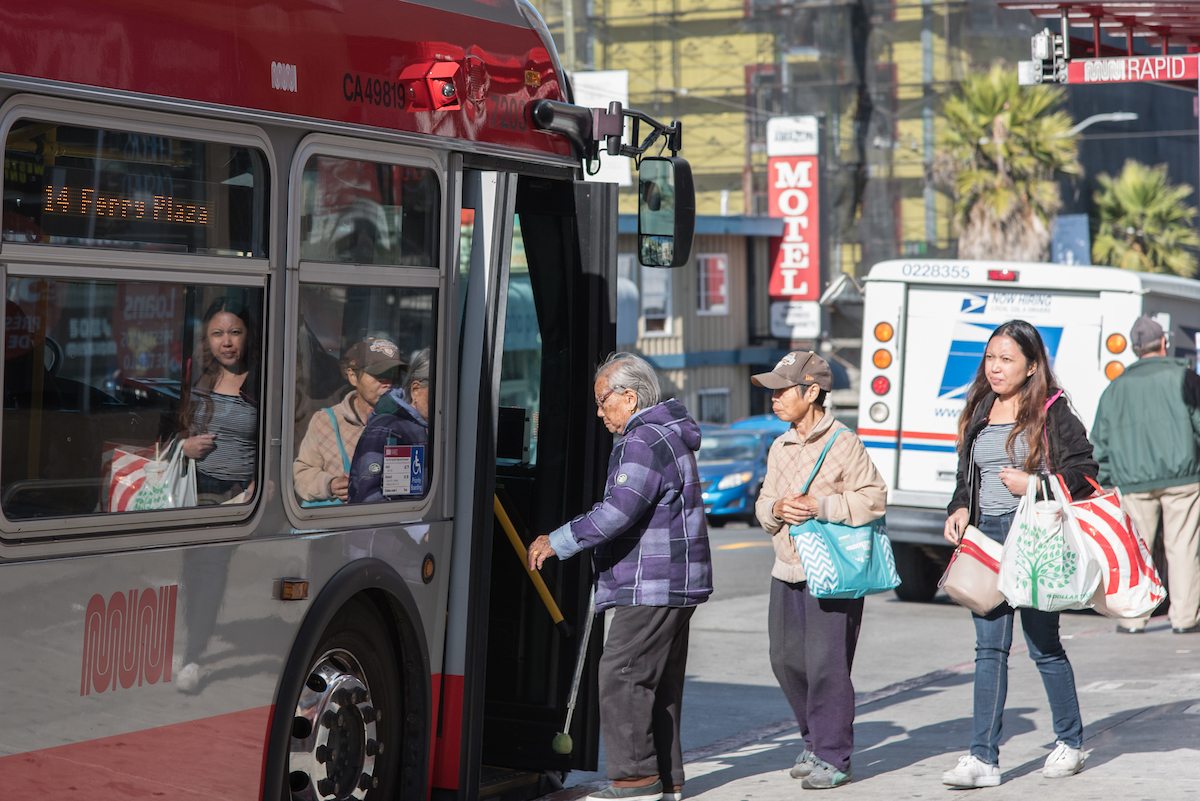 With our new budget, people can still get where they need to go on more than 70 Muni routes.
With our new budget, people can still get where they need to go on more than 70 Muni routes.
On Tuesday, April 16, the SFMTA Board of Directors unanimously approved the agency’s FY 2025 and FY 2026 SFMTA operating and capital budgets. The consolidated budget has just been sent to the Mayor’s Office for review. Next, it will head to the Board of Supervisors for final review.
With this budget, we can continue to provide:
Transit service on 72 Muni routes
Improvement projects that help make Muni safer, cleaner, faster and more reliable
Paratransit service for half a million seniors and people with disabilities every year
Street safety programs and projects like new street designs that make our roads safer for everyone
We’ll share how we got to this stage, and the importance of your feedback. We’ll also cover some of the key features of our budget and what you can expect next in the process.
In December 2022, we projected a $214 million budget gap for the upcoming two-year budget. Our teams worked hard to shrink this gap.
We reduced the agency’s expenses. We made our processes more efficient. We also limited hiring to key positions. By December 2023, we had reduced the budget gap to $12.7 million.
To close the remainder of the gap, the Board had to make difficult decisions. Our revenues still haven’t recovered from the economic impacts of the pandemic. So, we have to raise revenues to avoid cutting programs or services San Franciscans need and deserve.
Community input was invaluable as we developed the budget, and it shaped the final version that our Board approved.
We held two citywide listening sessions and 35 meetings with neighborhood groups, merchant associations and community-based organizations. We also heard from the public at our Board meetings from January through April.
In response to that input, we modified our original proposal for generating the $12.7 million needed to close our budget gap. The budget now includes modest increases to Muni fares, fees and fines. These increases will protect vulnerable populations and improve fare equity. They will also support the future financial health of the agency.
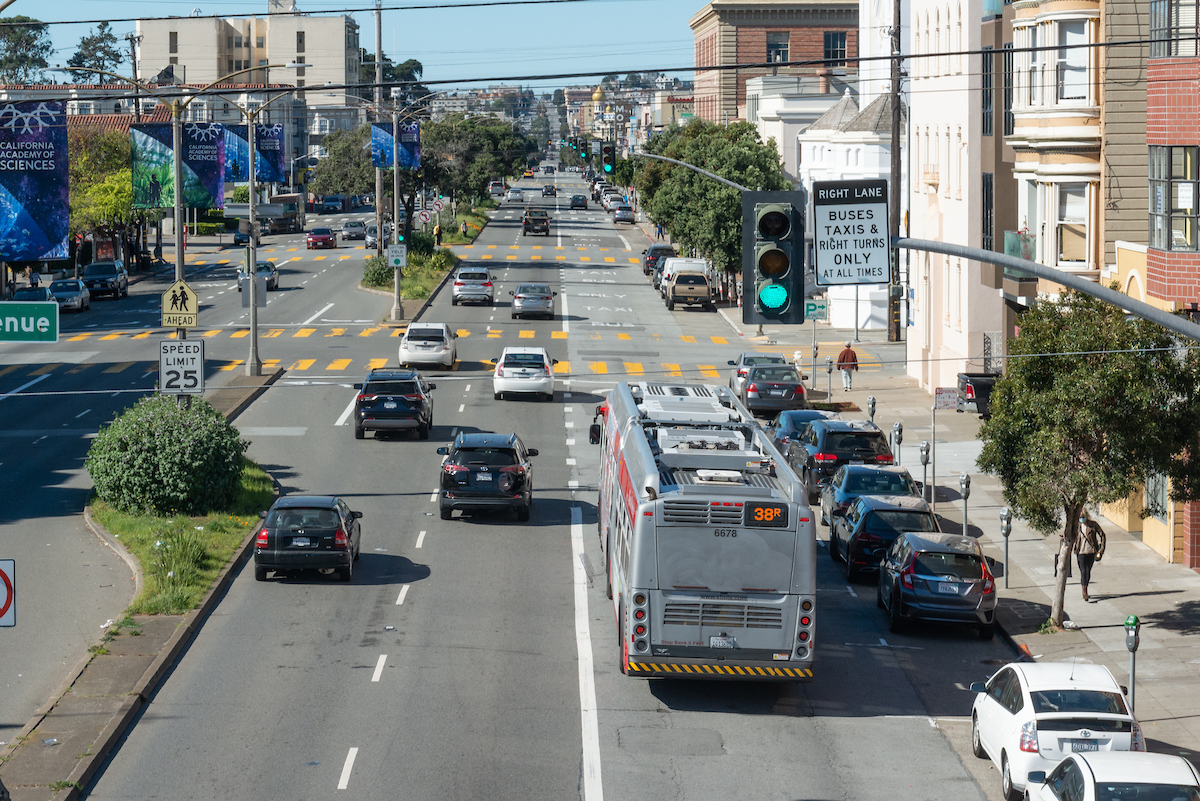 The new budget ensures people who pay in cash won’t see fare changes on their Muni rides.
The new budget ensures people who pay in cash won’t see fare changes on their Muni rides.
The cash fare riders pay for Muni will remain the same because that’s how San Franciscans with the lowest incomes pay to ride. We will also continue providing Free Muni for Youth and a 50% discount on monthly passes to riders with low incomes, seniors and riders with disabilities. And we will do more to promote our discount fare programs so that more people who qualify can take advantage of them.
We originally proposed eliminating the Clipper Card discount over the course of two years. But we heard concerns about how this might impact Muni ridership and changed our proposal. We now plan to reduce the discount but not eliminate it.
Parking fines will go up in both years of the budget. By the second year, tickets for street cleaning and parking meter violations will have gone up by $15.
We understand that a lot of you are concerned about people not paying to ride Muni. Fare evasion has gone up since the pandemic. So, we’ve included funding in this budget for 36 additional fare inspectors. The more our fare inspectors are visible on Muni, the more people will pay their fares, so this investment will pay for itself.
We also heard that you want us to improve street safety. In response, we reallocated resources and will improve our intra-agency collaboration to speed up street design changes that protect people who walk, bike and roll.
After the Mayor’s Office sends our proposed budget to the Board of Supervisors, the Board may allow it to take effect without any action or it may reject the budget.
We appreciate the hundreds of people who participated in our budget process. We’re proud that we’ve been able to make Muni faster and more reliable than it’s probably ever been despite our financial challenges. And we all want to do more than that.
We want Muni to thrive, not just survive. We want it to become the best transit system in the world. We know you share that goal, and we look forward to working together to achieve it.
For more information on the budget proposal, you can review the April 16 budget presentation we gave to the SFMTA Board.
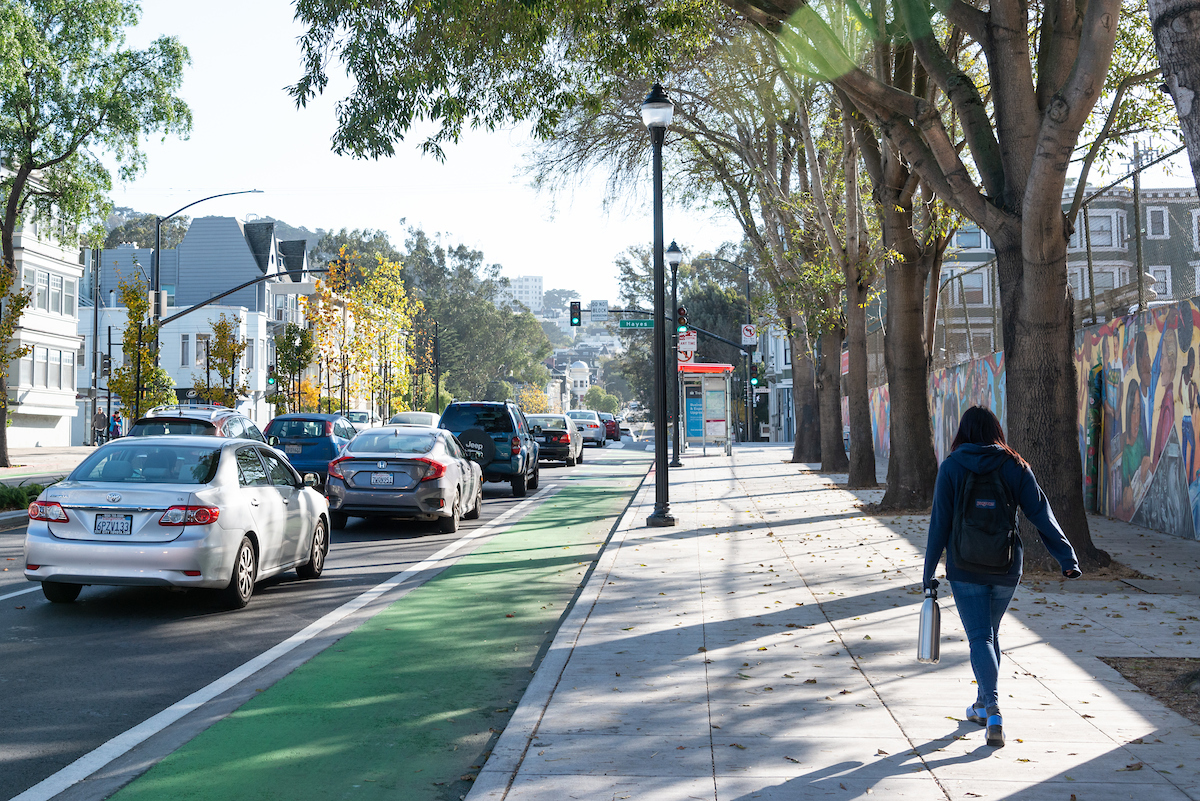 Keeping cars off our sidewalks and bikeways will help make it safer for everyone to get around.
Keeping cars off our sidewalks and bikeways will help make it safer for everyone to get around.
This week, we will begin a focused parking enforcement plan to help make sidewalks and streets safer for all San Franciscans. We’ll carry out this work on a rotating basis in each supervisor’s district. Our goal is to limit violations of existing parking regulations.
The new Neighborhood Operations Plan will prioritize enforcing safety-related violations. These include parking on the sidewalk, in bike lanes and crosswalks. This way, we can help ensure that people who walk, bike and roll on the city’s sidewalks and streets do not have to enter traffic lanes to get where they need to go.
Our work will improve safety for people using mobility devices like wheelchairs and crutches. It will also help people pushing children in strollers. People who drive will also find it easier to navigate city streets. The Neighborhood Operations Plan will ensure the traffic lanes for cars are safer.
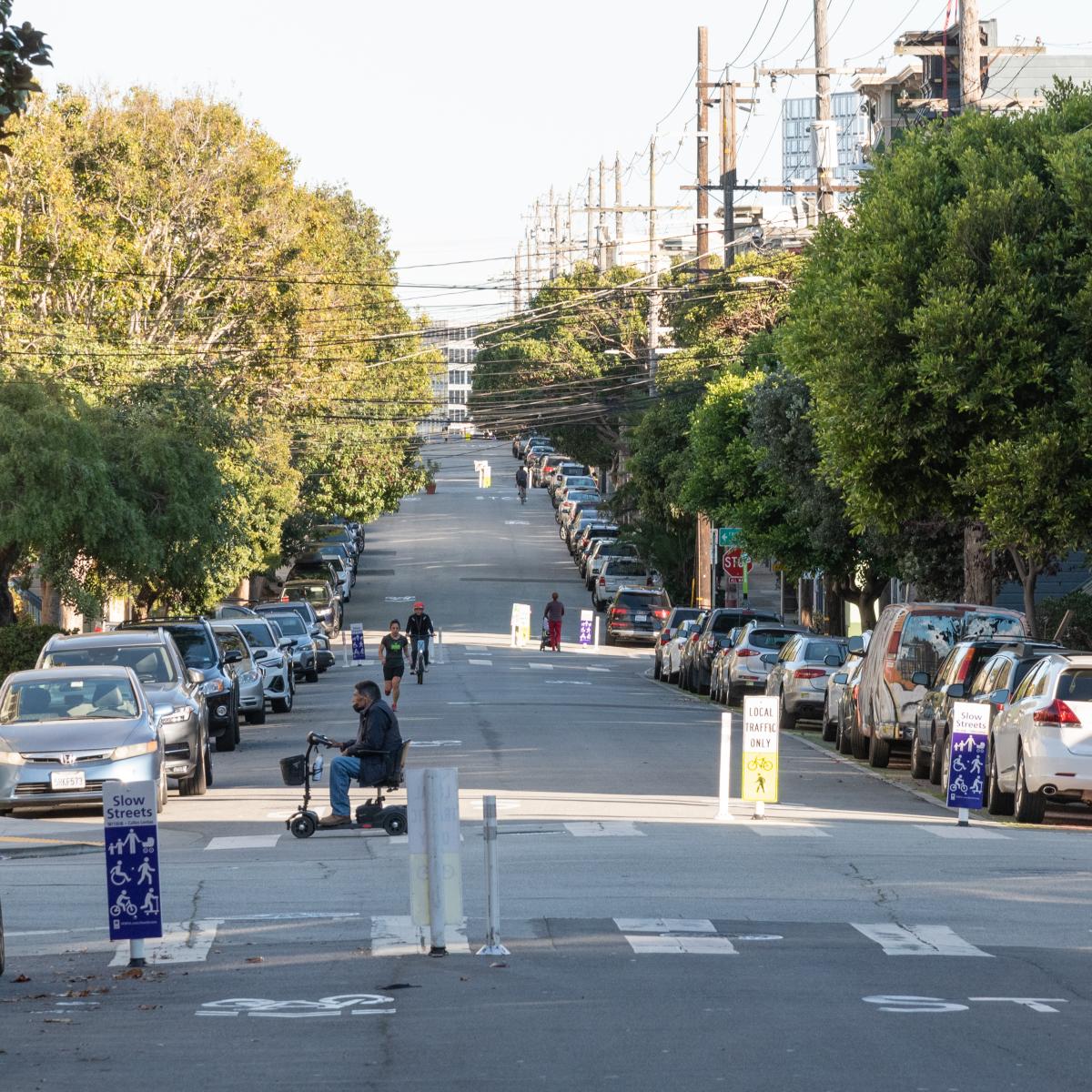 Our plan will help make travel safer for people who walk, bike, roll or use mobility devices.
Our plan will help make travel safer for people who walk, bike, roll or use mobility devices.
The plan aligns with Mayor London Breed’s commitments for the next phase of Vision Zero, San Francisco’s policy to prevent traffic fatalities and severe injuries. Visit the Vision Zero program webpage for more information.
As we reach normal staffing levels for parking control officers, we're in a better position to enforce the city's parking laws.
Moreover, city leaders with this plan are responding to requests from residents. “I am stepping up enforcement of our laws, because that’s what residents deserve and that’s what our city needs,” Mayor Breed said in her State of the City address earlier this year.
The operation will deploy parking control officers to each supervisor’s district for one week of enhanced enforcement. These officers will also carry out their regular duties.
We are in ongoing discussions with the Mayor’s office and each member of the Board of Supervisors on how we will implement the plan for each district.
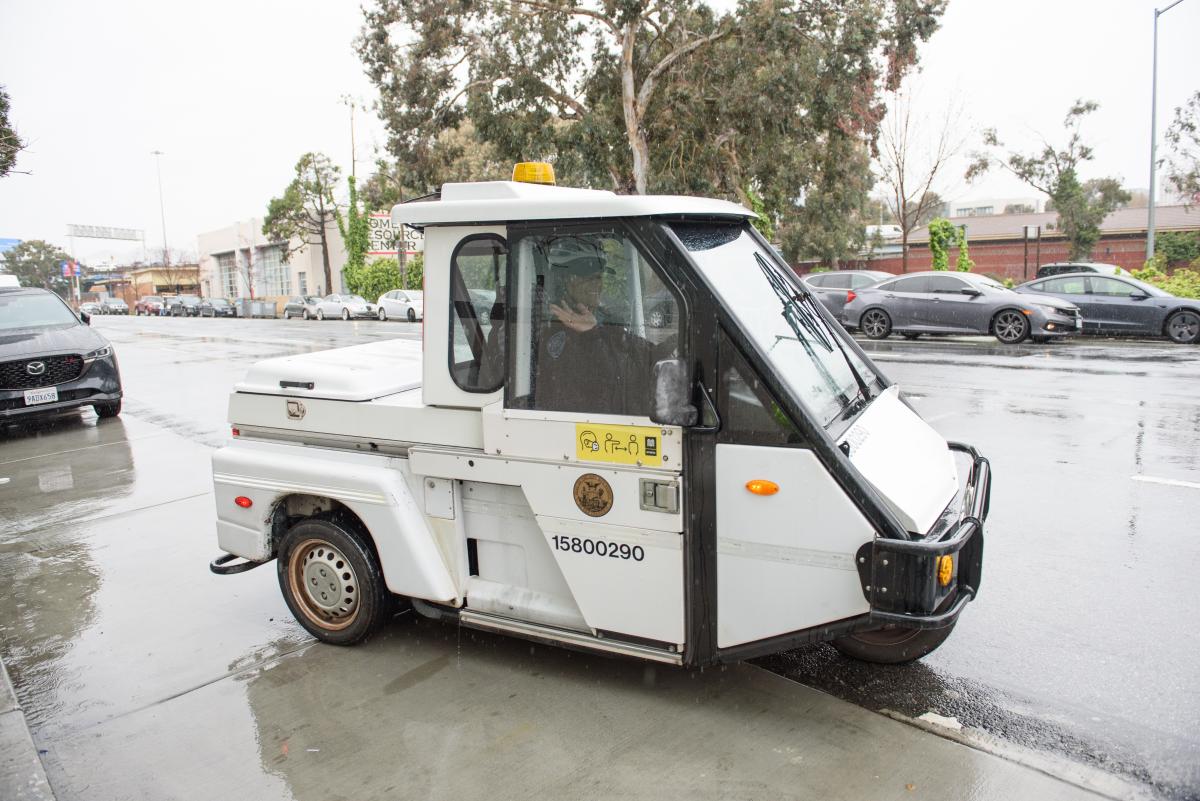 Our parking control officers work hard to keep streets and sidewalks safe.
Our parking control officers work hard to keep streets and sidewalks safe.
So what does that mean for people who park on the city’s streets?
In short, if you obey existing laws, there will be no difference. For a guide on parking rules in the city, visit our How to Park Legally in San Francisco webpage.
As a refresher, here are guidelines for parking in the city:
Do not block driveways or crosswalks. A driveway begins at the “curb cut.” That’s where the driveway begins to slope downward toward street level. Residents can park parallel along the street in front of their own driveways if the driveway serves one to two units and the vehicle is registered to the address.
Do not park on sidewalks, even if the pedestrian path is partly clear or if a vehicle is parked across a driveway. A sidewalk citation can be given even if the pedestrian travel path is partly clear or if the vehicle is parked across a driveway. For more on the city’s parking regulations, visit the San Francisco Planning Department’s Code Enforcement webpage. To check your sidewalk’s width, please visit the Department of Public Works’ grade map.
Do not obstruct bikeways.
The goal of the Neighborhood Operations Plan is not to punish. It’s in response to residents’ and city leaders’ desire to enhance the safety of our streets and sidewalks.
By preventing parking on sidewalks and bikeways, we make it safer for everyone to get where they need to go. People who walk, bike, roll and use mobility devices can stay in the part of the streetscape that’s safest for their use. People who drive can access clear, safe traffic lanes.
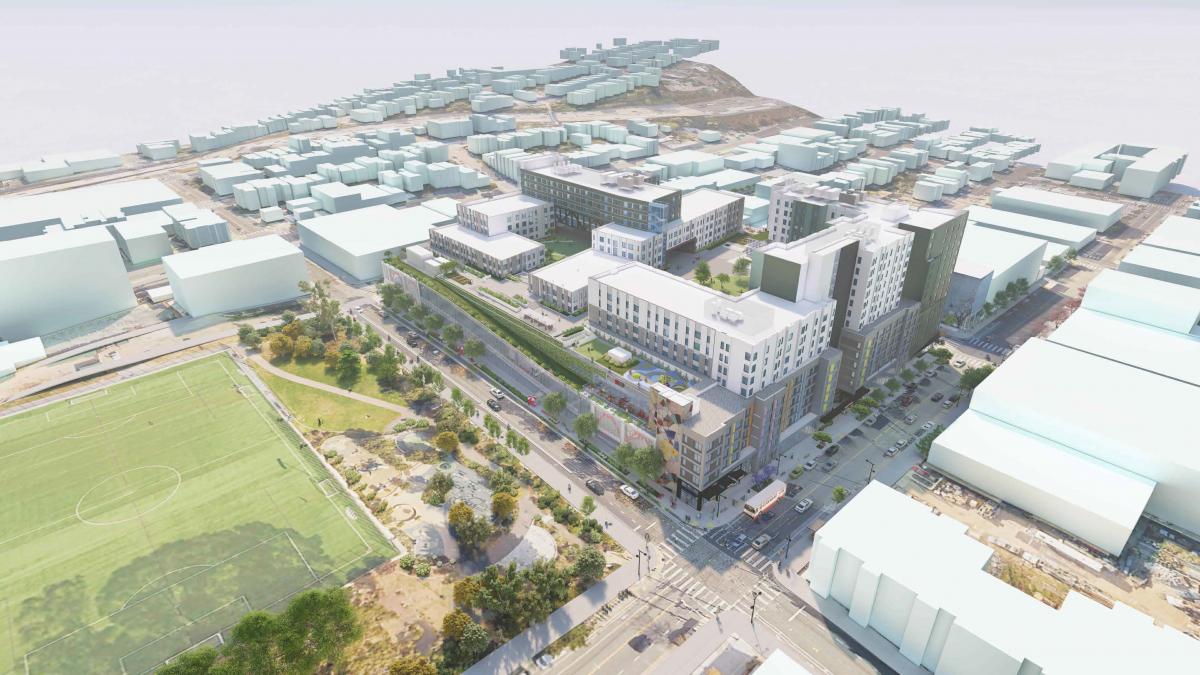 A rendering of the Potrero Yard Modernization Project. Learn more about our plan to replace a 100-year-old bus yard with new transit infrastructure and up to 465 affordable housing units. (Arcadis IBI Group)
A rendering of the Potrero Yard Modernization Project. Learn more about our plan to replace a 100-year-old bus yard with new transit infrastructure and up to 465 affordable housing units. (Arcadis IBI Group)
Maintenance and repair work are key to your smooth rides on Muni. That's why we're working hard to improve infrastructure at the Potrero Yard. Recently, we reached a major milestone.
Mayor London Breed and the Board of Supervisors approved legislation that lets us move forward with the Potrero Yard Modernization Project.
Learn why the legislation could spell big wins for transit and housing. See how your feedback shaped its success.
Potrero Yard was built in 1915 to serve 100 streetcars. The 4.4-acre site is bordered by Bryant, 17th, Hampshire and Mariposa streets.
We plan to replace it with a new facility to maintain and store our electric trolly buses. The project site could also include up to 465 units of housing above and beside new transit infrastructure. No other development is set to combine a working bus facility with new affordable housing. That makes this initiative the first of its kind in the nation.
Entitlements are the green light from city lawmakers to proceed with the Project as proposed. To facilitate development of the Project, they include Amendments to the General Plan, the creation of a Special Use District and amendments to the Planning Code and Zoning Map.
Securing entitlements allows us to continue with the project development. Now, we can move closer to creating final designs. With this legislation, city lawmakers have allowed us to:
Build transit infrastructure and housing units in the same space. We’ve created a Special Use District for the project site. It includes public transit infrastructure plus commercial spaces and residential housing units. The entitlements allow the site to expand beyond its current “public” use as a transit facility to also include housing and commercial components.
Define structure height and bulk limits for the zone. Before, structures on the site could only be 65 feet tall. Now, with the new Special Use District, we can exceed that limit. The transit facility will reach 75 feet and proposed housing will reach up to 150 feet. Also, the legislation describes the size, shape and placement of buildings on the site, which are the bulk requirements.
We want to thank Supervisors Hillary Ronen and Shamann Walton, who sponsored the legislation. Each played a leadership role, and we’re grateful for their partnership.
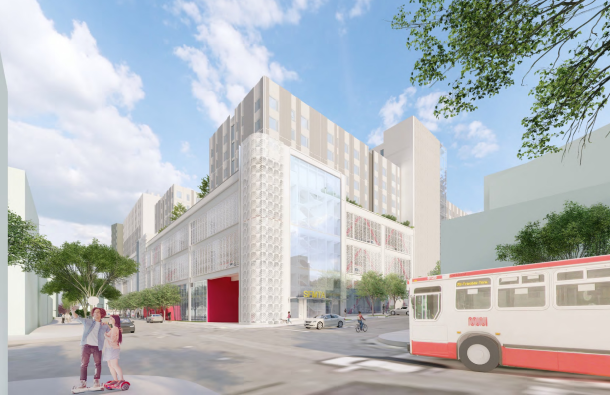
Rendering of the new bus yard and trolley bus entrance on Mariposa and Hampshire streets. (Arcadis IBI Group)
As we celebrate this milestone, we’re grateful for the community feedback that helped make it possible.
Since the project started in 2018, our agency and city partners have worked closely with the community. During the approval process for the Entitlements, lawmakers and others noted our extensive outreach efforts. They include:
140 community meetings, tours and events held by our project team and partners over the last six years
As city leaders reviewed the legislation, individuals and organizations showed their support by submitting letters on behalf of the project to the Recreation & Park and SF Planning commissions. You can read them on this SF.gov repository for letters submitted on behalf of the Potrero Yard Project. We want to thank everyone who wrote in for their support.
With the green light to continue planning, we’re excited to share more about our vision for Potrero.
Public transportation is one of the best tools we have to fight climate change. It's crucial that we replace our outdated facility with one that will make it easier to service and store our electric trolley buses. This work is key to maintaining our fleet, the greenest of any major city in North America.
The new facility is designed to:
Have capacity for 54% more electric trolley buses
Help crews be more efficient with maintenance and repairs
Give more than 800 SFMTA staff the space and tools they need to keep Muni running
The proposed housing would also add more affordable rental units in the Mission. These units and commercial spaces would sit next to and above the bus facility. You can learn more on our Potrero Yard Modernization Project - Proposed Housing and Commercial Component webpage.
Area Median Income (AMI) will determine who is eligible to live in the new housing units.
Affordable housing: Households with incomes between 30 and 80 percent of the AMI will be eligible.
Workforce housing: Households with incomes ranging from 80 to 120 percent of the AMI will be eligible.
Many staff at our agency, including operators and maintenance staff, have incomes that would qualify for the workforce housing component. We’re working to create a preference for our staff for the workforce housing units.
We’re glad to partner with the Potrero Neighborhood Collective (PNC), our developers for the project. The city selected a proposal from this consortium because it offers technical expertise and global experience. The PNC team includes affordable housing developers with local ties.
We’re thrilled to be part of this unique public private partnership. It allows the city to build the transit infrastructure, while the PNC team finances and constructs housing.
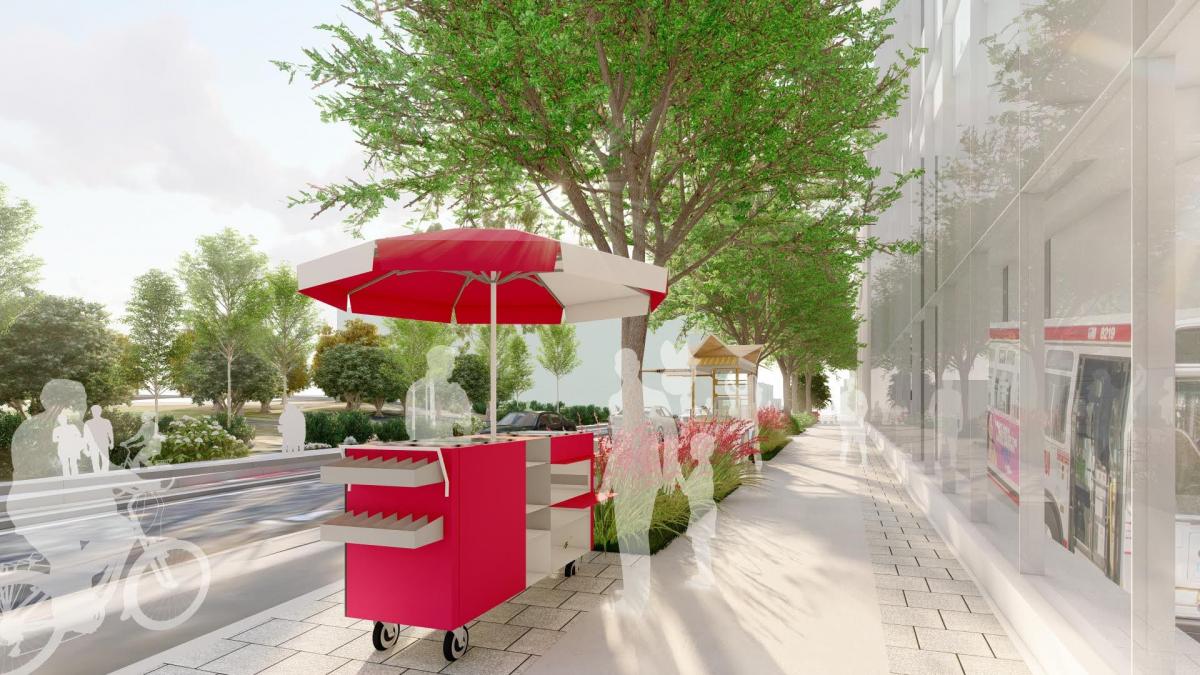 Illustration shows plans for a protected bike lane along 17th Street and vendor kiosks. (Arcadis IBI Group)
Illustration shows plans for a protected bike lane along 17th Street and vendor kiosks. (Arcadis IBI Group)
So far, the modernization project has moved from conceptual design to 100% Final Schematic Design. It also received California Environmental Quality Act (CEQA) clearance in March. This step paved the way for the Entitlements stage.
Now, we are able to move the project through the Design Development phase. Then, we can create construction documents for the bus yard. The housing component will have its own schedule and financing structure. The transportation infrastructure will be funded through transportation dollars.
As the project moves forward, we continue to welcome feedback. You can contact us by phone or email:
415.646.2223
Visit the Potrero Yard Modernization Project webpage for the latest information and events.